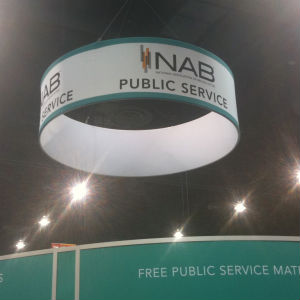 Hoo boy! Still another company is trying to solve the impenetrable problem of streaming live over-the-air TV to computers and mobile devices, legally.
Hoo boy! Still another company is trying to solve the impenetrable problem of streaming live over-the-air TV to computers and mobile devices, legally.
The latest contender is Bamboom, which has worked out yet another permutation. It uses really tiny over-the-air antennas, “hundreds of thousands of them in a small space in a secure location” in a given city. Each subscriber gets an exclusive connection to one of those antennas to watch TV through the internet.
Two factors in favor of Bamboom’s survival: Only viewers in the same TV market will be allowed to watch, and it has a war chest of $4.5 million from investors. It will need that war chest because of the one huge factor that weighs against Bamboom and anyone else who tries to find a way around negotiating with OTA broadcasters – the huge corporations which own the networks and TV stations will sue or legislate it out of existence.
I haven’t checked to see whether someone from New York will be able to watch his local stations while visiting somewhere else, because it’s just a matter of time before someone gets a restraining order to shut down Bamboom. Considering FilmOn‘s history, that could be a month or less.
You see, there’s already a way to do all this. The big cable and pay-TV satellite companies are rolling out internet streaming of live TV, but only for their customers. So if you want to watch local TV on your computer, you just pay one of these providers, who turn around and pay retransmission fees to the local broadcaster. With all that money at stake, our corporate oligarchy will slap down anyone who tries to get around the system.
But just maybe, there might be one way out. With the support of the consumer electronics industry, the FCC is squeezing local TV broadcasters to free more bandwidth to be used for mobile internet access. The broadcasters are fighting back, but with the mobile communications companies against them, the outcome is completely uncertain.
Here’s my proposal for a deal between the internet/consumer electronics folks and the TV broadcasters. Local TV stations keep their spectrum, but in exchange, broadcasters agree to a standard royalty that any company could pay to stream OTA channels over the internet. Then the broadcasters could keep milking their cash cows, and viewers could choose from Bamboom, FilmOn, ivi.tv, or any other internet delivery system. How does that sound?
* You gotta love the folks at FilmOn. Even though it pretty much failed in its original idea to stream OTA channels, FilmOn has patched together a decent lineup of oddball channels for a decent price. But back when the networks sued to block FilmOn from streaming their content, founder Alki David and some friends sued CNET, a subsidiary of CBS, for facilitating “massive copyright infringement”. Because CNET had published stories about how peer-to-peer file sharing worked. Anyway, the judge in that case pressed David et al to detail exactly what copyrights were infringed. This week, the answer came: one movie and five songs.
* A couple of weeks ago, my favorite streaming service, ivi.tv, filed a Freedom of Information Act request with the FCC for all papers relating to ivi.tv and Commissioner Meredith Baker, who is leaving the FCC to join Comcast, whose merger with NBC she voted for in January. Meanwhile, ivi’s lineup has shrunk to two free channels as it fights to for the legal right to stream the marvelous banquet of OTA channels it used to provide. I’d really love to see ivi pick up some more freely available channels (NASA, Classic Arts Showcase, etc.), but what do you want for nothing?



